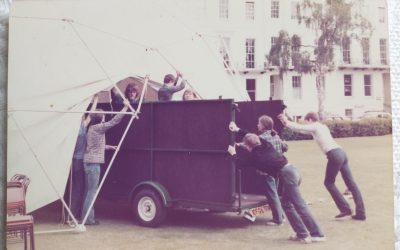 Last night I went to a stupendous concert performance of Wagner’s ‘Die Walküre’ at the Edinburgh International Festival. (Thank you, Amber Wagner, Simon O’Neill, Christine Guerke, Bryn Terfel, Karen Cargill, Matthew Rose, conductor Sir Andrew Davis and the RSNO!) The two intervals were kept to a minimum, but the performance still lasted five hours and even though there were no costumes or scenery, the audience was rapt throughout.
Last night I went to a stupendous concert performance of Wagner’s ‘Die Walküre’ at the Edinburgh International Festival. (Thank you, Amber Wagner, Simon O’Neill, Christine Guerke, Bryn Terfel, Karen Cargill, Matthew Rose, conductor Sir Andrew Davis and the RSNO!) The two intervals were kept to a minimum, but the performance still lasted five hours and even though there were no costumes or scenery, the audience was rapt throughout.
We instrumentalists are bombarded by advice to offer shorter concerts, lighter and more mixed programmes, to ‘make contact with the audience’ by chatting to them, taking care not to ‘be intimidating’, etc etc. We’re told that today’s audience doesn’t have the patience for full-length programmes and prefers an hour-long concert to which they can bring a beer. We’re reminded that radio stations like Classic FM thrive by playing movements of things instead of whole pieces.
So I was fascinated by the sight of a packed Usher Hall focusing without strain on five hours of Wagner. Indeed, the roar of applause which greeted the end of each Act was an almost shocking contrast to the hour and a half of quietness that preceded it. It all seemed to make a mockery of the idea that today’s listeners have short concentration spans and need to be catered for accordingly.
Reflecting on it afterwards, I realised that of course in opera there is one element which purely instrumental music doesn’t have: a story. Of course, musicians would say that every piece of abstract music has its own narrative, one which they aim to put across to the audience, but the ‘story’ is not of the overtly dramatic kind that powers ‘Die Walküre’. Take away the singers but leave Wagner’s orchestral music exactly as it is and I expect listeners would be slipping out long before the end. It’s the long arc of the Nibelung myth that enables listeners to follow Wagner’s long-drawn-out exposition patiently.
What can instrumentalists learn from this? We can’t superimpose a storyline on pieces designed as pure music, but we can think about how to map more clearly the ‘journey’ that all good pieces of music invite the imagination to make.




And, indeed, you did just that at the recital of yours which I attended at the Brunton Theatre a couple of years ago. You talked us through the journey of the Beethoven sonata which you were about to play and provided clear signposts for the audience to follow. This was a far cry from the usual rather dry programme notes which are generally provided and greatly enhanced the musical experience. Thank you!
Elaine Hill
Thank you so much Elaine – that’s a lovely comment.
I’m not sure who’s telling you all those things about what audiences want, or where they claim to have gathered their information, but I think they’re full of . . . beans. Your point about a ‘story’ line is well taken but surely there’s more to it than that: How many people choose to see only films or plays that last no more than an hour? I’d need some convincing that abbreviated attention spans truly are the issue. (Of course, having said all that, I should confess that I’d never make it through five hours of Wagner.)
Hi Steve – yes, I’m sure you’re right that it’s a complicated issue. On the one hand we keep hearing that our attention spans are diminishing rapidly because of social media etc. On the other hand we hear that people are ‘bingeing on box sets’. All very perplexing.